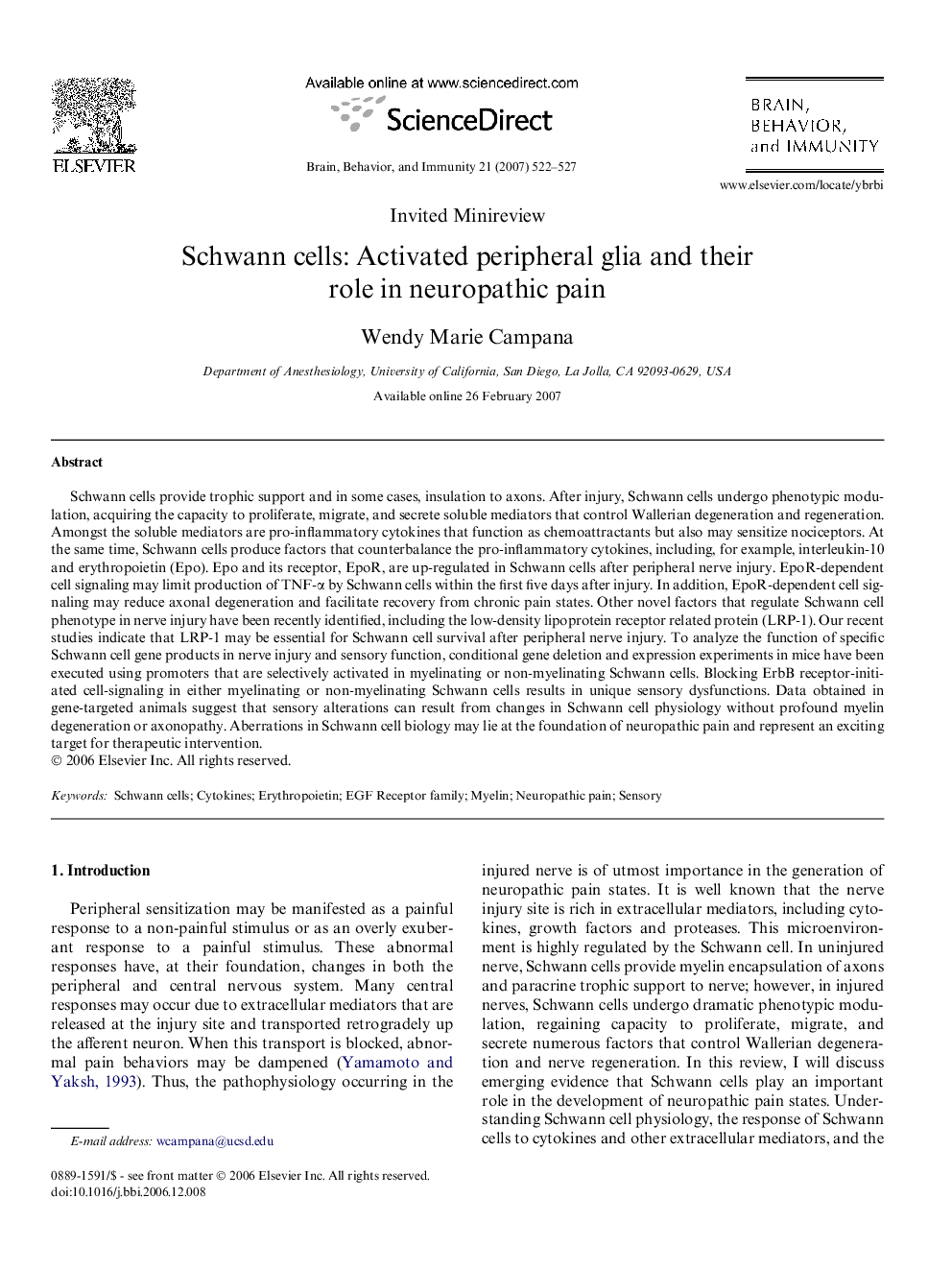| کد مقاله | کد نشریه | سال انتشار | مقاله انگلیسی | نسخه تمام متن |
|---|---|---|---|---|
| 923731 | 921111 | 2007 | 6 صفحه PDF | دانلود رایگان |

Schwann cells provide trophic support and in some cases, insulation to axons. After injury, Schwann cells undergo phenotypic modulation, acquiring the capacity to proliferate, migrate, and secrete soluble mediators that control Wallerian degeneration and regeneration. Amongst the soluble mediators are pro-inflammatory cytokines that function as chemoattractants but also may sensitize nociceptors. At the same time, Schwann cells produce factors that counterbalance the pro-inflammatory cytokines, including, for example, interleukin-10 and erythropoietin (Epo). Epo and its receptor, EpoR, are up-regulated in Schwann cells after peripheral nerve injury. EpoR-dependent cell signaling may limit production of TNF-α by Schwann cells within the first five days after injury. In addition, EpoR-dependent cell signaling may reduce axonal degeneration and facilitate recovery from chronic pain states. Other novel factors that regulate Schwann cell phenotype in nerve injury have been recently identified, including the low-density lipoprotein receptor related protein (LRP-1). Our recent studies indicate that LRP-1 may be essential for Schwann cell survival after peripheral nerve injury. To analyze the function of specific Schwann cell gene products in nerve injury and sensory function, conditional gene deletion and expression experiments in mice have been executed using promoters that are selectively activated in myelinating or non-myelinating Schwann cells. Blocking ErbB receptor-initiated cell-signaling in either myelinating or non-myelinating Schwann cells results in unique sensory dysfunctions. Data obtained in gene-targeted animals suggest that sensory alterations can result from changes in Schwann cell physiology without profound myelin degeneration or axonopathy. Aberrations in Schwann cell biology may lie at the foundation of neuropathic pain and represent an exciting target for therapeutic intervention.
Journal: Brain, Behavior, and Immunity - Volume 21, Issue 5, July 2007, Pages 522–527